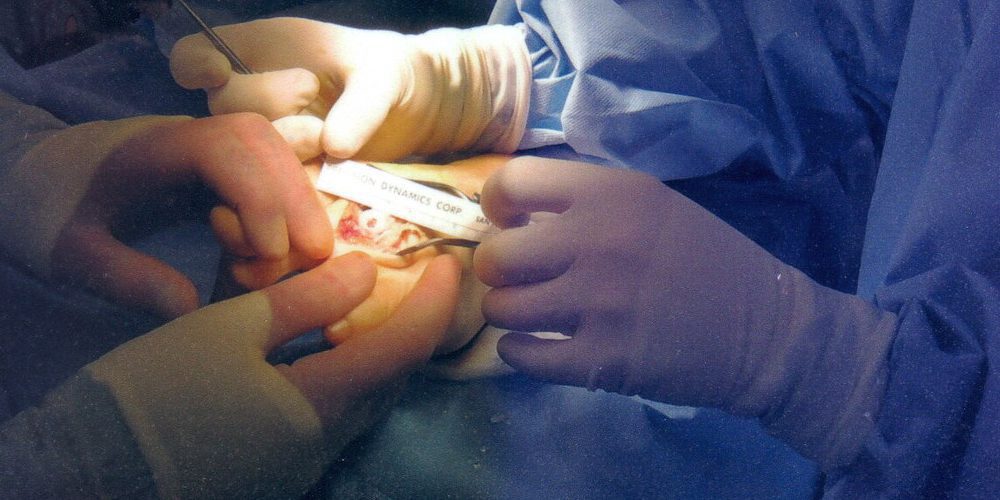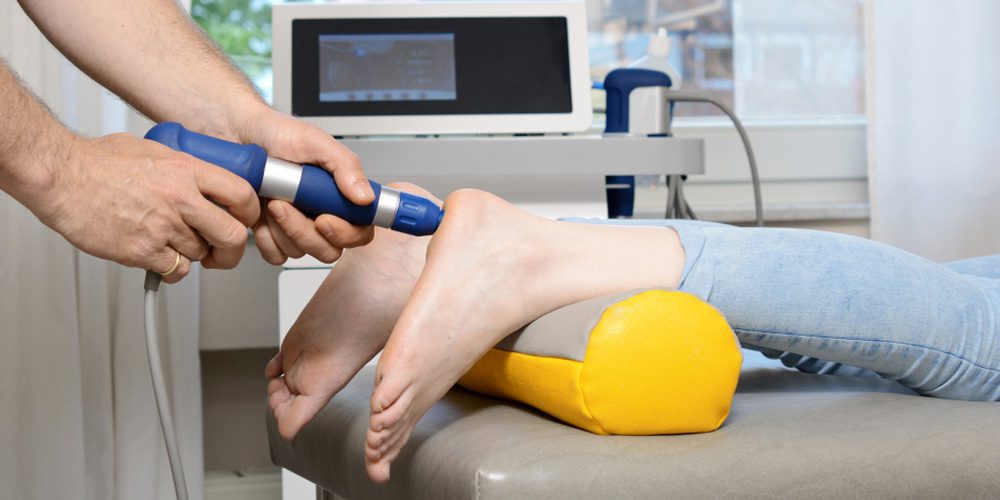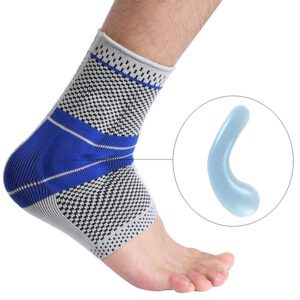Plantar fasciitis may develop into a persistent condition if not properly treated. Plantar fasciitis can become chronic in some cases if left untreated. Surgical treatment is generally the final option for relief, although it might be necessary in severe situations.
In the past, heel spurs were removed during surgical treatment because doctors thought they caused plantar fasciitis. Now, with improved imaging tools and long-term research studies, doctors know that plantar fasciitis causes heel spurs to develop.
The most frequent surgical procedure for plantar fasciitis is a plantar fascia release, which entails trimming the ligament and releasing tension. This subsequently decreases the inflammation that causes pain from plantar fasciitis.
The American Academy of Orthopedic Surgeons considers only 12 months of aggressive nonsurgical therapy as enough time for a plantar fascia release. Individuals who have normal range of motion at the ankle without Achilles tendon shortening are candidates for the release. If you have a bone spur, it will be removed in tandem with the release.
Endoscopic surgery has an 83% to 90% success rate and significantly fewer post-surgical complications and a faster return to normal activities, according to a study published in the Oschner Journal. Rather of making a larger incision across the foot, a small incision is made inside the foot, allowing for less scarring.
Often patients are advised to immobilize the foot after surgery with crutches or a wheelchair. However, studies have shown that early mobilization limits recovery time and can decrease post-operative pain.
Allowing the plantar fascia ligament tissue to heal naturally reduces the rate of re-injury and lowers the risk of recurrence after surgery, according to a study published in the Journal of American Academic Orthopaedic Surgeons.
Flattening of the arch, loss of feeling over the arch, and a potential plantar fascia rupture are just a few of the risks associated with surgical treatment. Other dangers include risk of anesthesia, bleeding, nerve damage, and infection. Accurate diagnosis is the most effective approach to avoid some of these issues.
As a patient, you are responsible for looking for a competent surgeon by acquiring recommendations, meeting with several doctors to select the best one for you, and examining their prior medical procedures. Patient satisfaction is associated with the surgeon’s experience, technique, and complication rate. Ultimately, a heel spur surgery patient can expect to be on crutches for up to six weeks after surgery.
How to avoid plantar fascia surgery?
Surgery isn’t a first-line treatment. The majority of individuals with plantar fasciitis will never require it. However, when you’ve tried everything else and still have persistent heel pain, surgery is an option. Before opting for surgery, your doctor may recommend less intrusive therapies such as:
- custom orthotics and arch supports
- day or night splints
- using kinesiology tape for your foot
- stretching and strengthening exercises
- icing
- foot baths and massages
- anti-inflammatory medications such as Ibuprofen
- cortisone, local anesthetic, or injections with platelet-rich plasma
- extracorporeal shock wave therapy to repair the plantar fascia tissue
- radiofrequency ablation to stop the transmission of pain signals
When you should consider surgery
If you cannot get rid of constant pain, despite trying various therapies and methods, you may need to research for a good doctor for surgery. Symptoms should not last more than 6 months, so if you’re still not able to participate in physical activities, exercises or sports after this time, you may be a good candidate for surgery as well.
Another important factor is if your heel pain interferes with your job. Your ability to work is essential and you can’t risk losing your job because you’re not fully able to do your daily tasks. So if that’s the case, you should try everything you can to get rid of plantar fasciitis as fast as humanly possible. And if surgery is your last resort after you’ve tried all the other methods, don’t hesitate to consult a specialist.
Risk factors
Plantar fasciitis surgery can have side effects. Complications, slow healing and longer recovery times may be higher if you have a history of health conditions. Diabetes is the most common factor and peripheral neuropathy comes second. We have published a full article on diabetic neuropathy that you may want to read if you are already diagnosed with diabetes.
Your doctor or healthcare provider will check and consider your overall health during a physical exam. They will make sure that you’re a good candidate and to find the right surgery method for your individual state.
What’s the surgery procedure?
Plantar fasciotomy is usually done in either of two ways. There is the open-surgery method that requires a hospital setting. And there’s the endoscopic surgery that can be done in a hospital, surgical center or a doctor’s office.
Both of these methods require you to stick to certain pre-op instructions. Usually you aren’t allowed to eat or drink within 6-8 hours before surgery. If you use medications regularly, make sure to discuss with your doctor whether you should take them normally in the morning.
Prior to surgery your vital signs will be checked and your foot is examined in detail. Very likely you’ll get an intravenous line injected into your arm for medications and your foot will be antiseptically cleaned. Here’s what both surgery methods separate from each other:
- Open surgery. This procedure requires regional block with sedation or general anesthesia. The doctor makes a 1 to 2 inch incision to expose your plantar fascia. That way he can detach it from your heel bone. Additionally he can remove any trapped nerves or bone spurs. Then the incision is closed with stitches.
- Endoscopic surgery. This way to do plantar fascia surgery is performed under local anesthesia, sedation or general anesthesia in a hospital, surgical center or doctor’s office. Your surgeon uses special imaging technology to guide him through your foot. Endoscopic surgery involves only small incisions, directly under the ankle bone. With a little camera (endoscope) and a tiny knife he can release the plantar fascia. After that, the incisions will be sutured and bandaged.
In most cases both methods are outpatient procedures. That means that you can go home as soon as you’re fully awake and your vital signs are not showing any complications. This only takes a few hours. Please arrange transportation in advance or have someone accompanying you through this day.
How long does recovery take after plantar fasciitis surgery?
You’ll be given post-op instructions that are tailored to your particular health needs. For the first few days, you can anticipate some discomfort or minor discomfort.
If your doctor finds that you need pain medicine, he or she may prescribe it. If not, over-the-counter medicines can be taken as directed.
You may require a walking boot, a cast, or a special shoe for several weeks after open surgery. The sutures or cast may need to be removed at your doctor’s office.
When you’re ready to start walking normally again, your doctor will tell you when you can resume wearing ordinary shoes. There will be a tiny scar where the incision was made.
To recover completely after open surgery can take 6 to 10 weeks.
If you have endoscopic surgery, your foot should be able to support light loads fairly quickly. You should be able to wear normal shoes within 1 or 2 days after the operation. Scarring will be minimal.
Many patients are advised to take it easy on their feet for months. In the meantime, your post-surgical rehabilitation might include flexibility and strength training, either with a physical therapist or alone.
Endoscopic surgery recovery time is generally 3 to 6 weeks. Based on your circumstances, your doctor may provide you with a prediction for how long you’ll be in therapy.
Procedures should be completed as quickly as anticipated. Patients should return for follow-ups as recommended for open and endoscopic surgery.
Risks and Side Effects
Surgery for plantar fasciitis might address the problem, but some people continue to have issues. Plantar fasciitis surgery has the following possible risks:
- Infection after surgery
- Recurring hell pain
- Slow healing
- Flattening of the foot’s arch
- Reaction to anesthesia
- Nerve injury or entrapment
Endoscopic surgery takes less time and doesn’t require general anesthesia, so the recovery period is shorter. While some of these same potential issues exist, the majority of them are minor.
If you feel increasing pain or signs of infection, don’t hesitate and let your doctor know straight away.
Takeaway
Plantar fasciitis is an inflammation of the plantar fascia, a ligament that runs from your heel to your toes. In most situations, there are several noninvasive therapies that may be used to treat it in about a year’s time.
When other treatments have failed and heel discomfort is jeopardizing your quality of life, you may wish to consider surgery. The ligament is loosened using open or endoscopic surgery.
Plantar fasciitis surgery, also known as fasciotomy, is a common treatment for persistent heel pain. Your surgeon can assist you decide if this surgery is an appropriate choice for you.
If you’ve experienced success with plantar fasciitis surgery and would like to share your story, please post it in the comments section below. If you have any questions about plantar fasciitis surgery or need advice on how to deal with your pain, please post them below!























